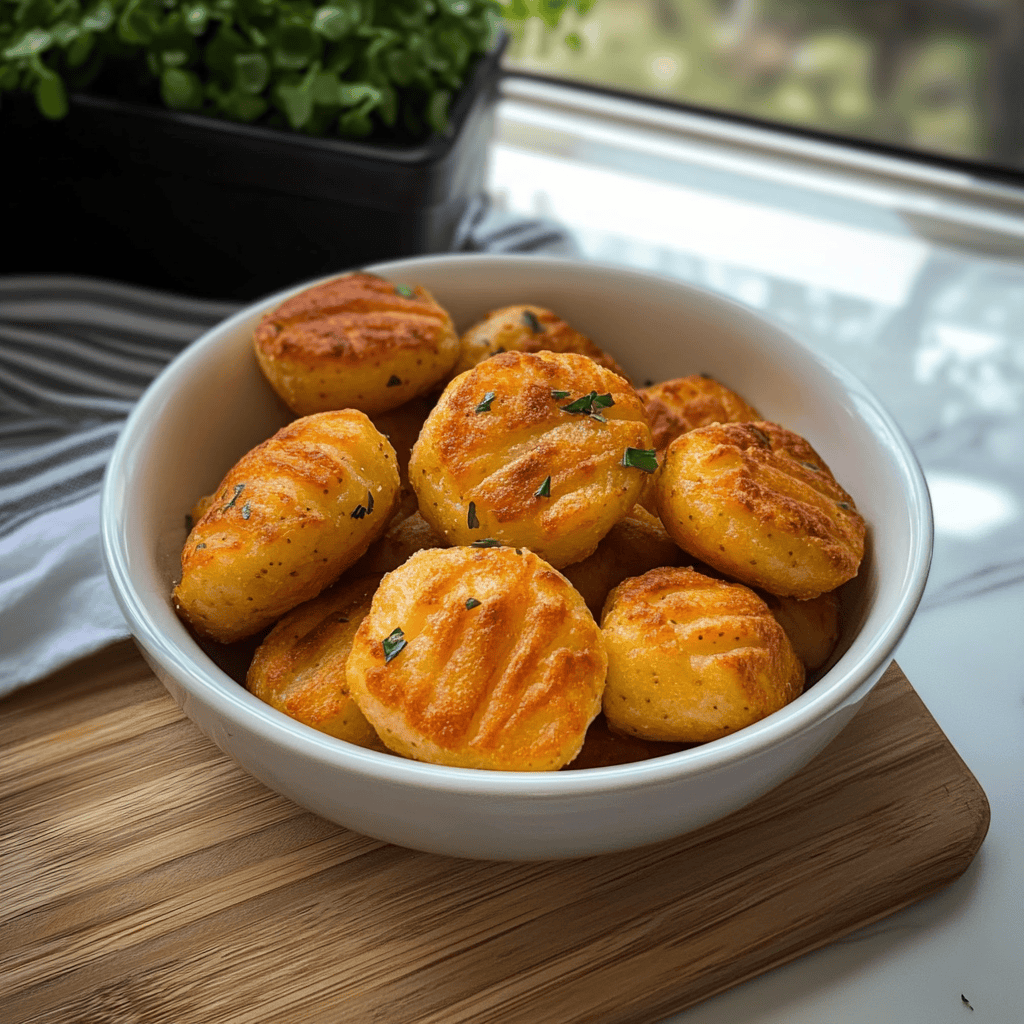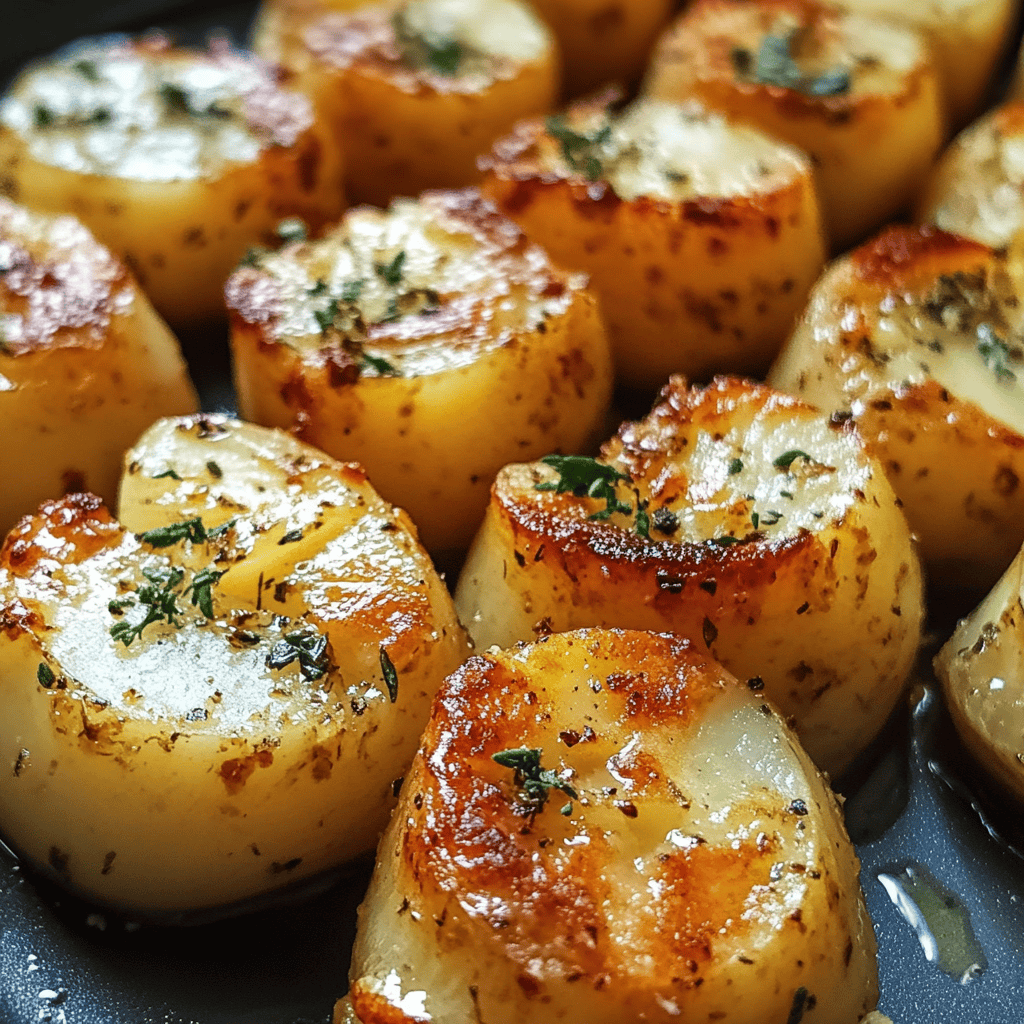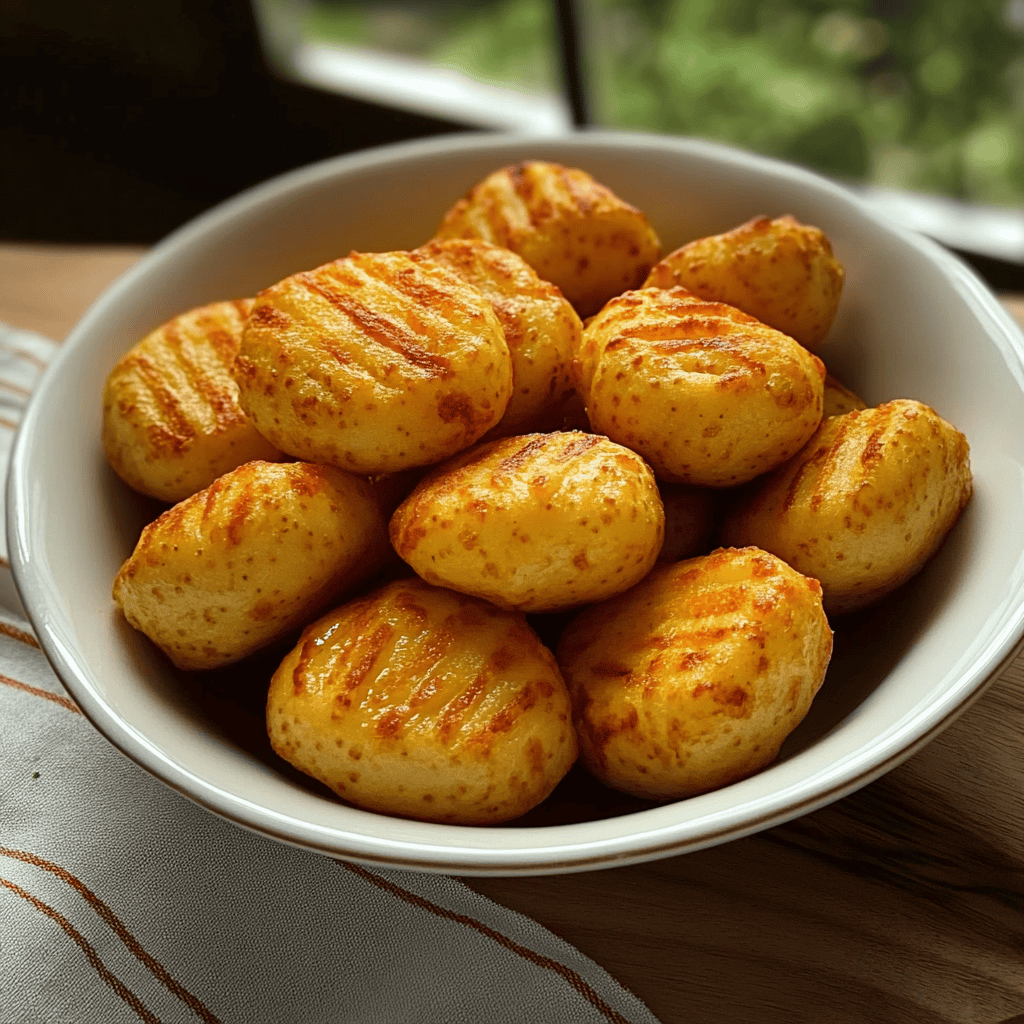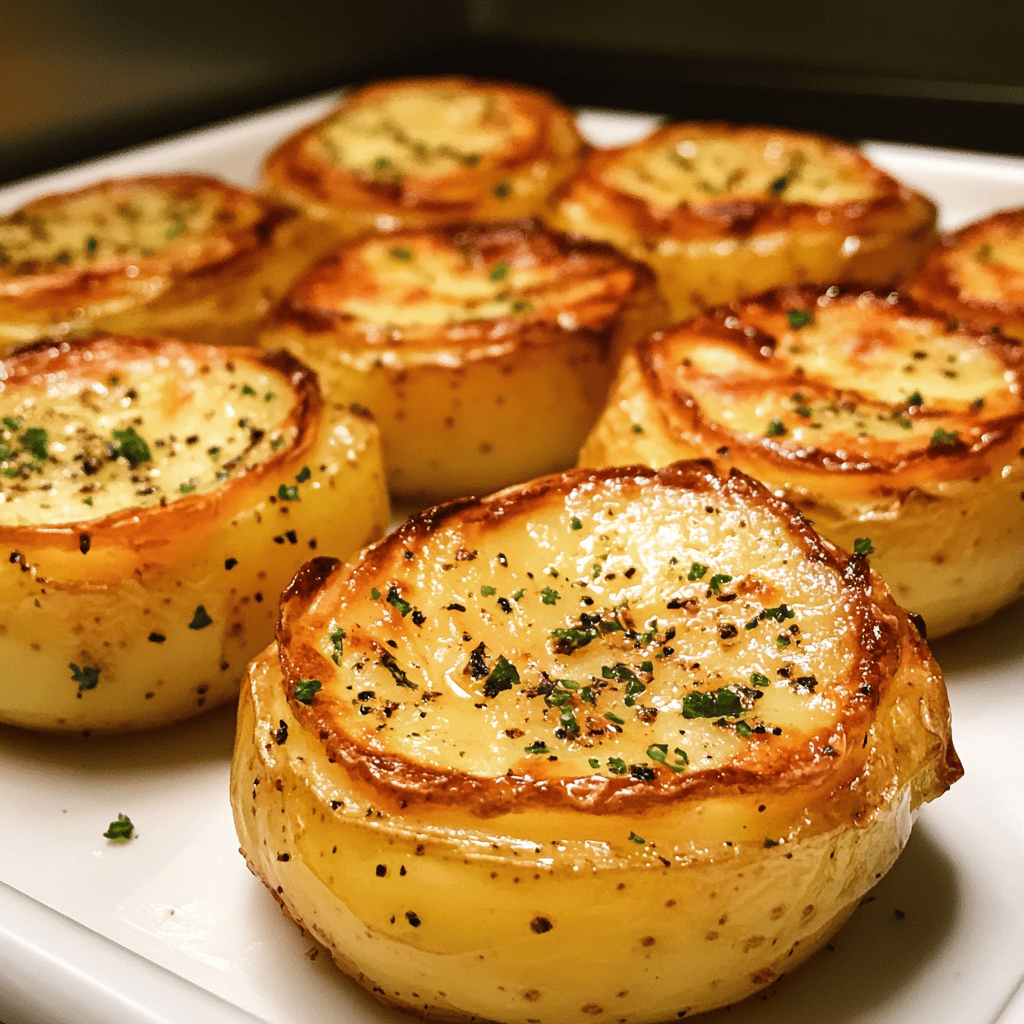Quick Overview
Potato pillows are a delightful culinary treat that combines the comforting flavors of potatoes with a pillowy texture that melts in your mouth. This recipe is perfect for anyone looking to enjoy a satisfying dish that’s easy to prepare. Whether you’re serving them as a side dish or as a main course with a dipping sauce, these fluffy delights are sure to impress family and friends alike. With just a handful of ingredients and simple steps, you can create these tasty treats in no time.
In this recipe, we will guide you through the process of making homemade potato pillows from scratch. Made primarily from mashed potatoes and flour, these pillows can be filled with cheese or herbs for added flavor. The versatility of this dish allows you to customize it according to your tastes. You can serve them with marinara sauce for dipping or alongside your favorite main dishes.
Get ready to bring joy to your dining table with this easy-to-follow recipe that promises delicious outcomes every time. Let’s dive into the ingredient breakdown and discover what you’ll need to make your own scrumptious potato pillows.
Ingredient Breakdown
Potatoes
The star ingredient of our potato pillows is, of course, potatoes! For this recipe, you’ll need about 2 pounds of russet potatoes. Russets are ideal due to their high starch content which yields light and fluffy results. Start by peeling and cutting the potatoes into chunks before boiling them until soft. This ensures they mash easily without any lumps.
Flour
You will need approximately 1 cup of all-purpose flour for binding the ingredients together. The flour helps create structure while keeping the dough manageable. Adding too much flour can result in dense pillows; therefore, it’s important to add it gradually until you achieve the right consistency.
Egg
One large egg is necessary for binding the mixture and adding moisture. The egg also contributes to the overall texture of the potato pillows. When whisked into the mashed potatoes, it helps hold everything together during cooking.
Salt
Salt is essential for flavor enhancement; use about 1 teaspoon in your mixture. It brings out the natural sweetness of the potatoes while ensuring the final product isn’t bland. Additionally, sprinkle some salt on top before serving for an extra flavor boost.
Cheese (optional)
If desired, incorporate ½ cup of shredded cheese such as mozzarella or cheddar into your filling. This addition brings a creamy element that complements the lightness of the potato pillows beautifully.
Step By Step Recipe: Potato Pillows
Step 1: Prepare the Potatoes
Start by washing 2 pounds of russet potatoes thoroughly under cold water. Peel them carefully using a vegetable peeler and cut them into even-sized chunks—this helps ensure they cook uniformly when boiled. Place the chunks in a large pot filled with cold water and add a generous pinch of salt to enhance flavor while cooking.
Bring the water to a rolling boil over medium heat and allow it to cook until tender; this usually takes around 15-20 minutes depending on chunk size. To check if they’re ready, pierce one with a fork; it should slide through easily without resistance. Once done, drain them well in a colander and let them rest for about five minutes before mashing—this step removes excess moisture which is crucial for achieving fluffy pillows.
Using either a potato masher or ricer, mash until smooth without any lumps remaining; let it cool slightly before proceeding to mix in other ingredients.
Step 2: Make the Dough
In a large mixing bowl containing your cooled mashed potatoes, crack in one large egg followed by one teaspoon of salt—this will season your dough perfectly! Gradually add 1 cup of all-purpose flour while stirring gently with a wooden spoon or spatula until combined.
Continue mixing until you form a cohesive dough—it should be slightly sticky but not overly wet; adjust by adding more flour if necessary (but do so sparingly!). Once you’ve achieved an appropriate consistency where it holds together well without falling apart upon handling; knead it lightly on a floured surface just enough times to ensure everything’s blended consistently throughout but avoid over-kneading which could lead to tough cookies instead!
Step 3: Shape Your Potato Pillows
With your dough prepared; divide it into equal portions roughly resembling golf balls sizes—this makes shaping easier later on! Dust each piece lightly in flour before rolling them out into small circles about ¼ inch thick using either hands or rolling pin technique (whichever feels comfortable).
If you’d like cheese-filled versions now’s an excellent time—make an indentation at center then place approximately one tablespoonful shredded cheese inside before folding edges over carefully pressing down firmly around perimeter sealing well (like making mini raviolis). Repeat shaping process until all dough has been formed into lovely little pockets!
Step 4: Cook Your Potato Pillows
Fill up another large pot with salted water bringing it back up again till boiling reaches where bubbles start forming actively across surface area which indicates readiness!
Carefully drop each pillow into boiling water ensuring not overcrowding them (work in batches if necessary) allowing space between pieces so they can float freely once cooked through properly without sticking together during simmering phase lasting approximately 3-4 minutes max depending on size—you’ll know they’re ready when they rise up towards top indicating doneness reached!
Using slotted spoon remove gently placing onto plate lined with paper towels absorbing excess moisture left behind after cooking process finishes off nicely before serving hot alongside preferred sauces/dips available at hand already waiting eagerly nearby!
Serving and Storing Tips
Serving Tips
Serve your freshly cooked potato pillows immediately after preparing while still warm—the best way to enjoy their delightful texture! Consider pairing them with marinara sauce or sour cream for dipping—a classic combination that enhances flavors wonderfully! Alternatively try serving alongside grilled meats or salads giving balance between rich hearty sides featuring lighter options complementing meals well too!
For gatherings consider creating fun appetizers by cutting larger portions into bite-sized pieces allowing guests plenty options exploring various dips offered alongside those tasty morsels—everyone loves finger foods especially when they taste this good!
If you’re feeling creative experiment by adding different fillings based on personal preferences such as sautéed mushrooms spinach feta cheese crumbles etc., opening doors endless possibilities turning simple dishes extraordinary every time served on table ready impress loved ones anytime occasion arises!
Storing Tips
If you have leftover potato pillows after enjoying your meal—you can store them easily! Allow any remaining pieces cool completely before transferring into airtight containers placing within refrigerator should keep fresh up-to three days maximum duration best consumed within first day though since flavors remain vibrant longer enjoyed fresh rather than reheating afterwards losing some original qualities experienced first bite taken previously.
For longer storage options consider freezing—place uncooked shaped dumplings directly onto baking sheet lined parchment paper allowing freeze solidly overnight next transfer stored within freezer bags ensuring removing air tightly sealing prior stacking neatly away until needed later down line when cravings return seeking comfort food yet again indulging entire household family members alike delighted seeing those golden brown beauties emerge freshly baked oven right back home soon enough!
By following these tips you’ll keep enjoying delicious potato pillows long after initial batch prepared sharing warmth hospitality inviting everyone gathering around tables creating memories made unforgettable cherished moments shared together through food enjoyed always loved ones nearby!
Mistakes to avoid
When making potato pillows, avoiding common mistakes can help you achieve the perfect texture and flavor. One major mistake is using the wrong type of potatoes. For potato pillows, starchy potatoes like Russets or Yukon Golds work best. These types create a fluffy interior that enhances the overall experience. Using waxy potatoes can lead to a dense and gummy texture, which detracts from the dish’s appeal.
Another mistake is not adequately draining excess moisture after cooking the potatoes. If you boil your potatoes, be sure to drain them thoroughly and let them dry out for a few minutes. Excess moisture can make your dough too sticky, making it difficult to shape into pillows. When preparing the dough, ensure you add enough flour gradually until you reach a workable consistency. Adding too much flour at once can make the potato pillows heavy and tough.
Additionally, avoid overworking the dough. Mixing too much can lead to gluten formation, resulting in chewy rather than fluffy pillows. Gently combine your ingredients until just incorporated for the best results. Lastly, pay attention to cooking times; undercooking will leave your pillow raw inside, while overcooking may cause them to burst during frying or boiling.
Tips and tricks
To perfect your potato pillows, several tips and tricks can significantly improve your results. First, consider chilling your cooked potatoes before mashing them. This simple step helps create a firmer texture that makes shaping easier and reduces stickiness in the dough. Chilling also allows for a more concentrated flavor in each pillow.
Use a food processor for mashing if you have one available; this creates an ultra-smooth consistency without overworking the potatoes. If you’re mixing by hand, use a ricer or masher to break down lumps effectively while keeping air pockets intact. This process contributes to a lighter final product.
Experiment with seasonings when preparing your dough. Adding herbs such as chives or parsley enhances flavor without overpowering the natural taste of the potatoes. Consider using spices like nutmeg or paprika for an extra twist in flavor that will elevate your dish.
When it comes time to cook your potato pillows, ensure that the oil is adequately heated before adding them to prevent sticking and promote even cooking. Use medium heat for frying; this ensures they develop a golden crust while remaining soft inside.
Suggestions for POTATO PILLOWS
For serving potato pillows, think about complementary side dishes that can enhance your meal’s overall flavor profile. A simple green salad with light vinaigrette pairs well with these delightful treats, offering freshness and crunch that balances their richness.
Consider sauces for dipping; a tangy sour cream sauce with herbs adds delicious contrast to potato pillows’ warm flavors. Alternatively, try marinara sauce or even pesto for those who enjoy Italian-inspired pairings.
If you want something heartier, serve potato pillows alongside grilled vegetables or roasted meats. The combination of textures and flavors will create an unforgettable dining experience that will impress guests.
For those looking to add variety to their meals, consider stuffing some of your potato pillows with different fillings like cheese, mushrooms, or cooked meat before sealing them shut and cooking as usual. This method adds an element of surprise and excitement in every bite.
Lastly, don’t shy away from creativity! Experiment with different shapes and sizes when forming your pillows; this can affect both presentation and cooking time but adds an artistic touch that makes sharing meals more enjoyable.
FAQs
What are potato pillows?
Potato pillows are soft dumplings made primarily from mashed potatoes mixed with flour and seasonings. They are formed into small shapes resembling miniature pillows before being boiled or fried until golden brown on the outside while remaining fluffy inside.
Can I prepare potato pillows ahead of time?
Yes! You can make potato pillows ahead of time by shaping them and placing them on a baking sheet lined with parchment paper before freezing them individually. Once frozen solid, transfer them into freezer bags for up to three months. Cook directly from frozen when ready by adjusting cooking time accordingly.
What type of potatoes should I use?
For optimal results when making potato pillows, choose starchy varieties like Russet or Yukon Gold potatoes due to their high starch content which yields fluffier textures compared to waxy types such as Red Bliss or new potatoes which hold more moisture leading potentially dense results instead.
Can I bake potato pillows instead of frying?
You can certainly bake potato pillows if you prefer a healthier alternative! Preheat your oven to 400°F (200°C) after shaping them onto greased baking sheets then lightly brush each pillow with oil before baking until golden brown—typically around 20–25 minutes—flipping halfway through ensures even browning!
How do I store leftovers?
Leftover cooked potato pillows should be allowed cool completely first before transferring into airtight containers where they will last around three days in refrigeration; reheat gently either in microwave wrapped loosely within damp paper towel ensuring they retain moisture!
Are there gluten-free options available?
Absolutely! To create gluten-free potato pillows substitute regular all-purpose flour with alternatives such as rice flour or gluten-free blends made specifically for baking; this allows those avoiding gluten still enjoy these delicious dumplings without compromising flavor!
Summary
In summary, making perfect potato pillows requires attention to detail while avoiding common mistakes such as choosing the wrong type of potatoes or neglecting moisture control during preparation steps like draining excess water after boiling them first prior blending together ingredients into smooth dough mixture ensuring proper seasoning balance throughout process leading better taste experience ultimately served alongside various side dishes options enhancing overall enjoyment factor whether casual gatherings family meals alike! Don’t forget tips like chilling cooked spuds beforehand creating firmer texture aiding shaping effort along experimenting filling choices adding surprise delights within every bite!




